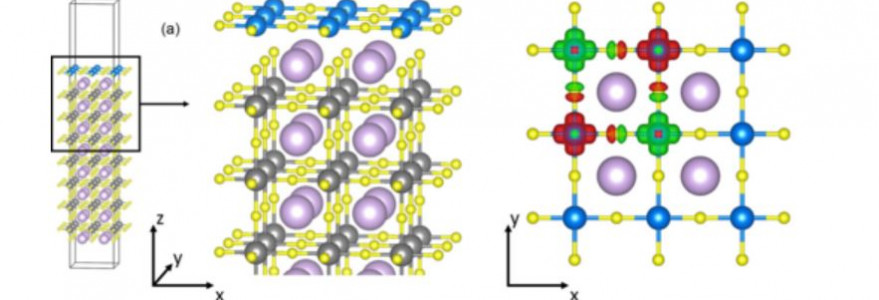Scientists have for the first time estimated the temperature at which superconductivity can be achieved in silver-fluoride-based superconductors. The obtained value of about 200 K (negative 73 deg. C) is substantially higher than the experimental record held by copper oxides – 135 K (negative 138 deg. C).
Prof. Wojciech Grochala and his research team at Center of New Technologies of University of Warsaw have for years now been dedicated to studying new candidates for compounds which can conduct electrical current without resistance – the so-called superconductors. One of the most promising candidates is silver(II) fluoride AgF2.
“This compound is very similar to copper- oxide-based superconductors, but there are important differences which preclude the emergence of superconductivity,” Prof. Grochala explains. One of those differences is the structural character at the atomic level: cuprate superconductors feature a framework of flat layers of copper oxide, which host strong magnetic interactions – a crucial prerequisite for superconductivity, as it is believed.
“However, in the structure of silver(II) fluoride, layers of silver and fluorine are corrugated, which reduces the strength of magnetic interactions considerably,” says Prof. Haibin Su from Hong Kong, who collaborates with the Polish team.
Now, researchers have found a solution to this problem. In a recent paper – a joint effort of Polish, Chinese and Italian scientists published in American Physical Society’s “Physical Review Materials”, they present a theoretical proposal for achieving flat AgF2 layers by deposition on a solid substrate with certain composition and structure.
“The choice of appropriate material as substrate enforces a particular, flat geometry of AgF2 deposited on that substrate, which leads to much stronger magnetic interactions than in bulk AgF2,” Dr. Adam Grzelak from CeNT explains, adding: “In nanotechnology, such fabrication method is referred to as thin layer epitaxial deposition.”
“We estimate that these interactions should be almost twice as strong as in copper oxides, which in turn could translate into 1.5-fold increase in temperature of superconductivity,” explains Prof. José Lorenzana, a team member from Italy. He points out that such high value of temperature would mean that new superconductors could be maintained using more economical infrastructures than those used today.
The next planned step is to use the existing experimental technology to verify these findings.
More information on the paper: Adam Grzelak, Haibin Su, Xiaoping Yang, Dominik Kurzydłowski, José Lorenzana, Wojciech Grochala, “Epitaxial engineering of flat silver(II) fluoride cuprate analogs”, Phys. Rev. Materials 4, 084405.



